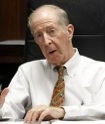The Mindful Judge®
The Art of Non-Judgmental Awareness in Action

The Mindful Judge®
The Art of Non-Judgmental Awareness in Action

I became obsessed with the study of time while I was living on a small Pacific island in Micronesia in the early nineteen seventies. The name of the island is Yap. It is 1500 miles due south of Tokyo, on the edge of the Philippine Sea, across the international dateline, in tomorrow. While I was serving as an assistant public defender in the Pacific Islands--officially known then as the Trust Territory of the Pacific Islands--I had an opportunity to observe time outside the traditional Western context.
In November, 1971, clutching a copy of The Moon and Sixpence by Somerset Maugham, the fictionalized account of Paul Gauguin's life, I left Miami for Yap.
Flying time was 24 hours straight, with stops in Los Angeles, Hawaii and Guam. The last leg of the journey--the Guam-Yap leg--was aboard a DC-6. It made the flight, 300 miles southwest of Guam, twice a week, Tuesdays and Saturdays, bringing fresh vegetables, rangy Australian beef, Spam, beer, magazines, newspapers and wide-eyed statesiders going to work in the Trust Territory.
After a bumpy landing on the unpaved, badly rutted airstrip, we came to a stop adjacent to the rusting fuselage of a Japanese Zero. A group of Yapese was waiting for the plane in the shade of the thatch structure that served as a terminal. The men were dressed in the traditional loincloth, a long narrow crimson cloth wrapped around the waist and between the legs. The women wore tightly woven grass skirts. From the waist up they were free of neurotic and irrational Western inhibitions.
I jumped off the plane. I walked toward the thatch hut dressed as Island Man in my white two-ply, combed-cotton, closely knit sport shirt, my khaki chinos with permanent crease, my full grain leather camp moccasins and my sea straw outback hat.
A short heavyset man introduced himself in broken English. It was Flounug, my Yapese assistant public defender.
After warm greetings were exchanged and I was introduced to all the Yapese dignitaries waiting in the terminal, Flounug drove me in his Jeep to my apartment house atop a steep hill--called Statesider Hill--overlooking the harbor, the barrier reef, and the vast blue Pacific Ocean beyond. It had eight units. It was home to the doctor, the dentist, a lovely Japanese businesswoman from Tokyo, and several Trust Territory contract employees.
Flounug helped me get squared away in my apartment. As he was leaving, I asked him when I could see my office and go over the pending cases. Flounug looked surprised. "No hurry," he said. "The High Court isn't coming until June."
"June!" I exclaimed. "June! What about my cases?"
"Not to worry," he said. "Your case is under control."
It was November, 1971. I had one case: Trust Territory of the Pacific Islands vs. Gaurufel, assault with a machete, aggravated by beer and mitigated by betel nut. One case and eight months to prepare.
It was at that time, when my situation was dawning on me, that Soichi Yokai was apprehended in wild, mountainous, largely uninhabited, southern Guam.
Soichi Yokai was a Japanese soldier who had been stationed on Guam during the second world war. He fought in the battle for Guam. When the island was recaptured by the United States in 1944, Soichi Yokai fled into the mountains rather than surrender or commit suicide. He lived in the mountains for 28 years. He had not answered a telephone, paid a bill, or seen a clock for 28 years. For 28 years he had responded only to the natural rhythms of hunger, thirst, exhaustion, heat, cold, sun, moon and rain.
Two Guamanians hunting deer caught Soichi at gunpoint and brought him in to Agana against his will. I read the account of his capture in the Pacific Daily News.
A joint team of United States and Japanese doctors and psychiatrists assembled to bring Soichi gingerly, expertly forward in time 28 years. His wife was flown in from Japan. I suppose she was mad as a hornet.
It occurred to me, as I sat on the porch of my apartment on Statesider Hill, looking toward Guam where Soichi was being introduced to television, instant mashed potatoes and disposable pens, that he and I had passed each other going in opposite directions. I thought, I need to talk to Soichi. What was I to do until the High Court came?
Sitting perfectly still, serene, brow unfurrowed, eyes lucid, Soichi would have counseled me: "Do not rush. Time does not exist. It is man made, superimposed over the underlying physical world, solely of necessity. There are qualities which have their phases. Time is not an indispensable element of anything occurring in the natural world. Everything occurs despite time, outside time, in its own phases. Prefer quality. Seek quality. Ignore time. Do not rush."
I began to seek quality and to ignore time. I began to see things in phases: day and night, sleep, eat, walk, pick up paycheck, eat, sleep.
From February until May, 1972, I worked on Trust Territory of the Pacific Islands vs Gaurufel. In May I wired the High Court and moved for a continuance. I couldn't possibly be ready. The court had begun its biannual sweep across the Carolines from Ponape to Paulau. They granted my motion from the island of Truk. The pressure was off.
The months passed inexorably while I pursued excellence. My neighbor, Haruko, the lovely businesswoman from Toyko, taught me how to prepare sushi. She wrapped slices of raw tuna artfully around compacted, bite-sized portions of steamed rice. I suggested that we separate the fat, wide grains of rice from the thin, narrow grains. She thought it was a waste of time. It was obvious to me that she needed a few more months on Yap. She was suffering from anxiety.
There did come a point, however, when the excitement of life in the United States became irresistible. Nixon and Kissinger had gone to China. Day by day the Washington Post was unraveling the Watergate coverup. In January, 1973, I flew home to Miami.
When I got back to Miami, I was shocked by the pace of life, the speed at which my friends and associates were living their lives. I beseeched them: "Slow down. Don't rush. Time measurement is artificial and arbitrary. It is an illusion. It has no relationship to anything real, like sunrises and sunsets, like the tides, the seasons. Forget time. Pursue excellence for its own sake. Speed and quality are fundamentally irreconcilable."
My counsel had no effect. The bottom-line mentality was in its ascendancy.
Undaunted, I ran for judge, seeing the judiciary as a sort of secular priesthood, a seminary where contemplative men and women stood outside of time, extracting principles of law from the firmament and applying them to nettlesome fact patterns on earth. Eventually, I was invested as circuit court judge and assigned to the criminal division in Dade County--one of the world's busiest courts.
I took my first guilty plea in early 1987. The courtroom was packed. People were standing in the aisle. Defendants in custody were shouting and rattling the bars of the small airless hold-cell adjacent to the courtroom. Lawyers from the State Attorney's Office, Public Defenders, private defense attorneys, corrections officers, probation officers, court clerks, bondsmen--they were all restlessly waiting for their cases to be called.
I sought to qualify the plea of a William Carruthers. I began with Hammurabi. Then I discussed Runnymede and King John. I heard gnashing of teeth in the background. People started leaving the courtroom. Babies cried. Prisoners clanged on the hold-cell bars. The muttering became audible and surly. I heard the F word: "faster, faster."
In this cacophony I remembered Soichi Yokai and I continued slowly, deliberately, speaking into the face of technology, into the accelerating velocity of the Western World: against gloss and superficiality, for quality, for excellence; against the computer and for the abacus; against the word processor and for the refillable ink pen; against the car phone and for villages, tribes and agrarian utopianism; against the synthesizer and for the flute; against VCRs and for conversation and literature; against the microwave oven and for smoked fish and red raspberry preserves.
That was almost two years ago. Since then my caseload has skyrocketed. It is, of course, Darwinian. Invisible forces of evolution are at work. In the next century, the race will go to the swift.
Technology is increasingly bold in eliminating the non-adaptive. Beneath the genial facade of efficiency is, as always, intolerance toward the irregular, the incongruent, and the nonconforming. Politically, this is translated into extinguished minority rights.
As always, there are two paths before us. One path is fast and easy. It leads downward toward despoliation of the environment and the enfeeblement of mankind. The other path is slow and difficult. It leads upward ... toward life.
November 10, 1988


Time: The Great Illusion
by Arthur Rothenberg
This poignant piece was written by Judge Arthur Rothenberg shortly after joining the bench.

Disclaimer | Terms of Use | Privacy | Contact
© 2003-2011. Institute for Mindfulness Studies. All Rights Reserved. The Mindful Judge is a trademark and Jurisight and Worrier to Warrior are registered trademarks of the Institute for Mindfulness Studies.